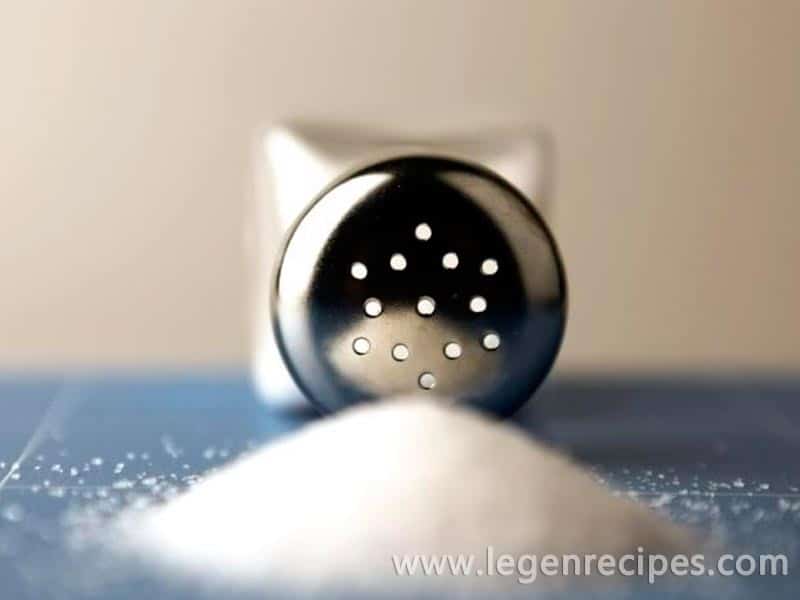How to select and properly use salt: rock, sea, artisanal and other types of salt.
Salt is going through unprecedented times. Around people are talking about how it would be unprofitable, and how good it would stop salting food at all. A salt meanwhile gets VIP-status and transformed into a symbol of belonging to the high gastronomy. However, not all.
History of salt
The history of salt – is the story of our world. Roman soldiers were paid with salt, and echoes of still heard what happened from the Latin salarium English word salary – «salary.” One reason for the fall of the French monarchy is considered harsh “salt tax”, which rebelled against the peasants. Mahatma Gandhi’s march against the monopoly on salt Raja ended the independence of India. In Moscow in the spring of 1648 also had a Salt Riot.
Salt live and dead: as salt useful?
The meaning and purpose of food-grade salt in our lives goes far beyond the task “give a more interesting flavor dinner.” Many physiological processes in our body are possible only if sufficient amounts of salt: it is necessary for proper digestion and metabolism, helps cells absorb substances that regulate the balance of fluids in the body, “dissolves” and helps to remove its end of life – salt biologists call “the main cleaner.” Some vital acid our body produces only because of the salt.
From a healthy body a moderate excess of salt displayed by themselves, but if something went wrong, the salt accumulates and can be a serious problem: excessive consumption of it is fraught with high blood pressure, cardiovascular disease, osteoporosis, and other failures.
It is believed that the problems with the salt began in the twentieth century, when the process of production has been industrialized – powder, which later received the insulting nickname of “white death”, by chemical treatment tried to give the maximum white, cleaned of any impurities and adding “antislёzhivayuschie ‘agents .
In pure form, salt – sodium chloride – not found in nature, depending on the origin are always present therein potassium, calcium, magnesium, sulfur, bromine, phosphorus, vanadium, and other elements.
Returning from an artificially purified salt to the living and natural – one of the main gastronomic trends in recent years. Reduce the amount, but improve the quality!
Sea salt
All the salt in the world comes from two sources: either from the sea or lake water or from salt mines.
Sea salt is first – even 800 years BC – Came up with the Chinese to produce: salted water poured on small and wide earthen troughs and evaporated to the state of the salt crystals. In Europe, this technique has spread in Roman times and I must say, since that time has not changed much. Today, large shallow evaporation ponds fill with water, the water evaporates in the heat, the salt remains on the bottom – where sea salt is produced in significant amounts, for example, in Sicily, snowy mountains occupy hundreds of hectares.
But there is in the world and a lot of salt, which are called beautiful in French fleur de sel – «flower of salt”. These artisanal salts do not like one another, like all living things (or at least, growing in natural conditions, and depending on the sun, the rain, the phases of the moon).
Each not only own color taste, but their sense of salinity (some felt more salt than others, although the content of sodium chloride is approximately the same in all), its texture, from cereal to records.
Perfect fleur de sel should be sufficiently strong so as not to dissolve in the hot, but not so hard to break a tooth. In most cases, it, unlike the large sea salt is used as the final touch dishes. Some varieties are known throughout the world – as the favorite chefs of haute cuisine English maldonskaya (recently celebrated its 130th anniversary, and the anniversary published a book of recipes from the religious chiefs) or fleur de sel from Camargue.
Artisanal salt, is not inferior in quality and produce – grown, the crop is removed, dried and manually unpack – small farmers on their own plantations, wherever there is sea water, from Morocco to California.
Rock salt
Quite a different landscape – the shaft of the XVI century in the mountains of Punjab in Pakistan. On the surface of the lift plate, and giant bars of shimmering stones – after being washed clean by the millennial dust, it would be up to the light pink, as the morning, or purple. 600 million years ago there was the sea, the volcanic activity that shook the earth in those days, hermetically “sealed” the sea within the earth, which later evolved into the Himalayan mountains. Over millions of years the sea vanished, and in its place were fused under pressure from the mountains into the stone formations of salt, known in the world under the name of “pink Himalayan”.
The extraordinary ability of rock salt
Everyone knows about roasting the fish in a salt crust, but the Himalayan salt is sold in blocks, plates, bricks and even cutting boards, can be used for almost any kitchen necessities from cutting vegetables, sotirovaniya and grill before serving. Guide claims that blocks Himalayan salt due to extremely low porosity can be adjusted to temperatures of from-18 to +370 ° C (salt melts at about 800 ° C, so that there is no danger). This means that in the cold salt blocks can be served ceviche or tartare, and the heated block can be put on the table, and guests can “fry” it thinly sliced pieces of meat or scallops. A fresh cheeses and fruits, lie down on a plate of Himalayan salt, soak a delicate saltiness.
Deposits of rock salt have all mountain chains in the world, but the deposits of these are very different in their origin – are so-called natural brines modern saline swimming pools, underground salt water deposits of mineral salts modern swimming pool is here such as in the Himalayas: the ancient fossil deposits the most valuable of all – for example, from Punjab pink salt is rich in iron, calcium and traces of 82 minerals that are important for human health.
Fashion on salt
Today’s fascination with salt akin to collecting, say, card. Of course, salt – a subject of the application: subtle shades of taste can affect the dish, and it is interesting to experiment. Especially since the addition of salts of different geographical origin there is a countless number of salt flavored: smoked (or abstract smoked, and, for example, in the alder and apples), wine (not easy, but always with a clarification: a merlot, say, Penedes – at this purple salt “earthy, mushroom” shade of taste), salt with lavender and wildflowers, with balsamic, with Iberian jamon, with anchovies, shrimp, bacon, caramel, chocolate … mills and to the impossibility stylish boxes of the salt can be purchased in gourmet stores like Hediard or specialized companies like Salnostrum, which are engaged exclusively in the establishment of such mixes.
Some are skeptical to say: “Sol, anyway, is still salt and impurities in it – is negligible, and aroma – a solid fiction and benefits – one placebo, and in general all these your fancy salt – very beautiful packaging and marketing “.
Salt actually evolved from basic essentials in the art object, a symbol of belonging to the high gastronomy, but above all it is the attention to detail.
There are other reasons, for example, Massimo Bottura, the celebrated chef of the restaurant Osteria Francescana in Modena, uses in the kitchen salt from Cervia, not only because of its outstanding taste, but also to present to the world the unique specialties of his native Emilia-Romagna region. So it supports the world, captured by globalization, artisans still storing the millennial secret of salt.
How much salt a person need?
Recommendations of the World Health Organization (WHO) for the consumption of salt were modified in 2013: previously in adults and children 2 years after the supposed no more than 2 grams per day, is now less than 2 grams – about half a teaspoon. Salts and without that we eat too much, it is everywhere and in everything, especially in processed food. Man easily “exhausts” daily rate of just one hundred grams of crackers or popcorn …




